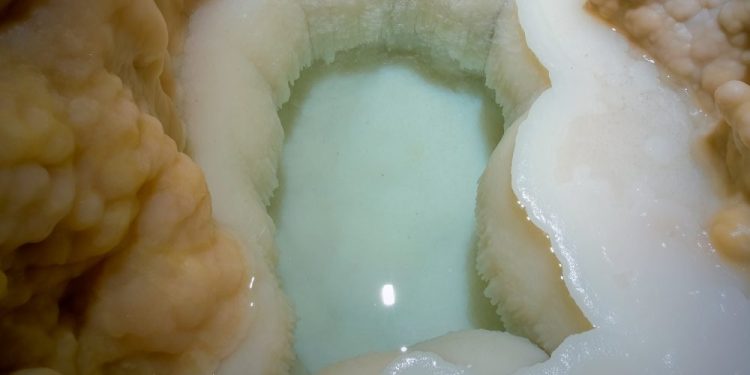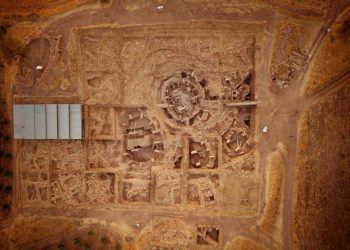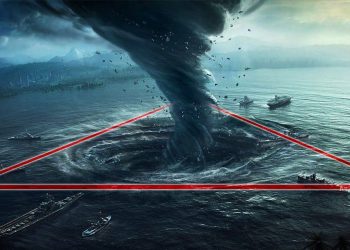A milky blue cave pool that remained untouched and isolated from the rest of the world for hundreds of thousands of years has recently been discovered by explorers inside the depths of the Carlsbad Caverns National Park in New Mexico, USA.
The cave pool was discovered by a group of explorers that set out to examine the depths of the cave network located some 700 ft beneath the National Park. Human eyes have never before seen the oddly colored body of water.
It contains a milky, aquamarine liquid surrounded by white rock formations, resembling a scene from a sci-fi movie showing a distant alien world.
The cave system is believed to be several hundred thousand years old. During its long evolution, it is believed to have never before been seen by human eyes, thanks to being well isolated and protected.
Explorers found the eerie milky pool of water around 700 ft beneath the Lechuguilla Cave entrance, one of the world’s ten longest caves. The cave was explored, and explorers entered some previously unexplored areas in October 2019. The cave’s odd pool was discovered nearly three decades ago when in 1993, scientists found its entrance.
Geoscientist Max Wisshak took to Facebook to explain more about the pristine lake pool.
He wrote, “This cave pool, found in Lechuguilla Cave, appears to be completely pristine. The edges beneath this pool appear to be ‘pool fingers,’ which could be bacterial colonies that have evolved entirely without human presence.”
“It is water in a pool lined with calcite. It might look soft, but calcite is hard,” reads a statement on Facebook.
Wisshak was one of the scientists who mapped nearly two kilometers (around 1. mile) of passages and various rope drops.
Although experts have explored the cave, it remains a mystery when the cave network formed precisely. So far, no visible traces of life have been found, but explorers did encounter bat skeletons, which are believed to date back several thousand years. This may hint at the possibility that there are still unexplored entrances to the cave that are small and may have been missed in previous explorations.
The images of the cave pool reveal a stunning, never-before-seen pool of water, which is around one foot wide, two feet long, and more than a few inches deep. Although indeed small, its unique color and surrounding geological formation make it one of the most amazing bodies of water discovered inside caves.
But its artistic appearance is not the only importance. Such bodies of water are of great importance to scientists because such isolated pools of water are largely free of contamination, and the microbiological life that may live inside such pools may be different from anything we’ve encountered so far and have existed within the particular ecosystem since time immemorial.
Although contaminants can make their way from outside the cave into the body of water, this is not the case with the Lechuiguilla cave since it is located in a well-protected wilderness area. Contaminants can also enter cave systems via aerosols transported through the air. But researchers say that the pool of water discovered inside the cave system is as pristine as it gets.
A Facebook post by the Carlsbad Caverns National Park explains that while exploring the pool of water, which was first encountered in 1993, “the team took special precautions to ensure there were no contaminants introduced to these pools of water.”
The expedition that explored the pool system says they’ve encountered various similar pools, the largest of which has been dubbed the Lake of Liquid Sky.
Have something to add? Visit Curiosmos on Facebook. Join the discussion in our mobile Telegram group. Also, follow us on Google News











